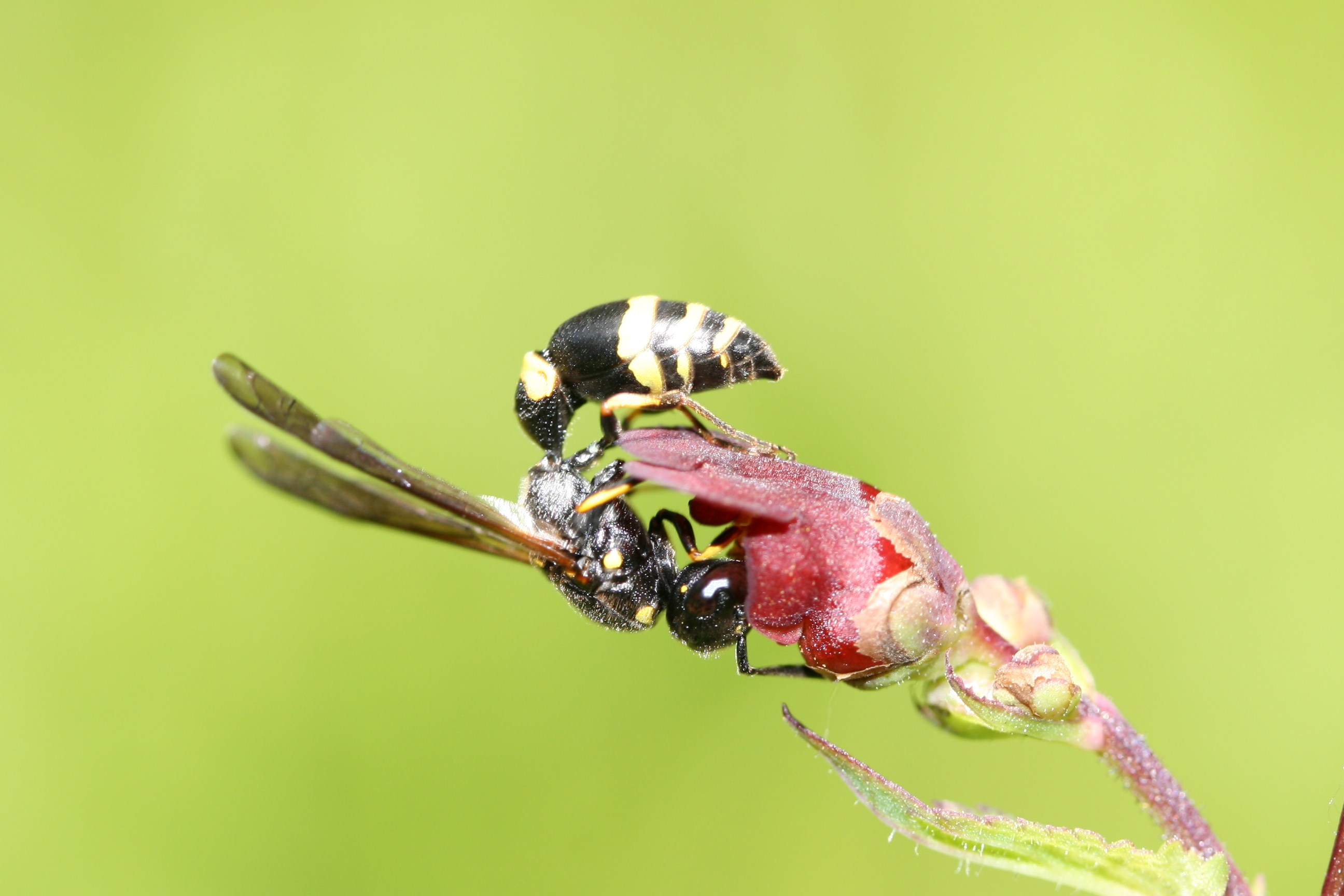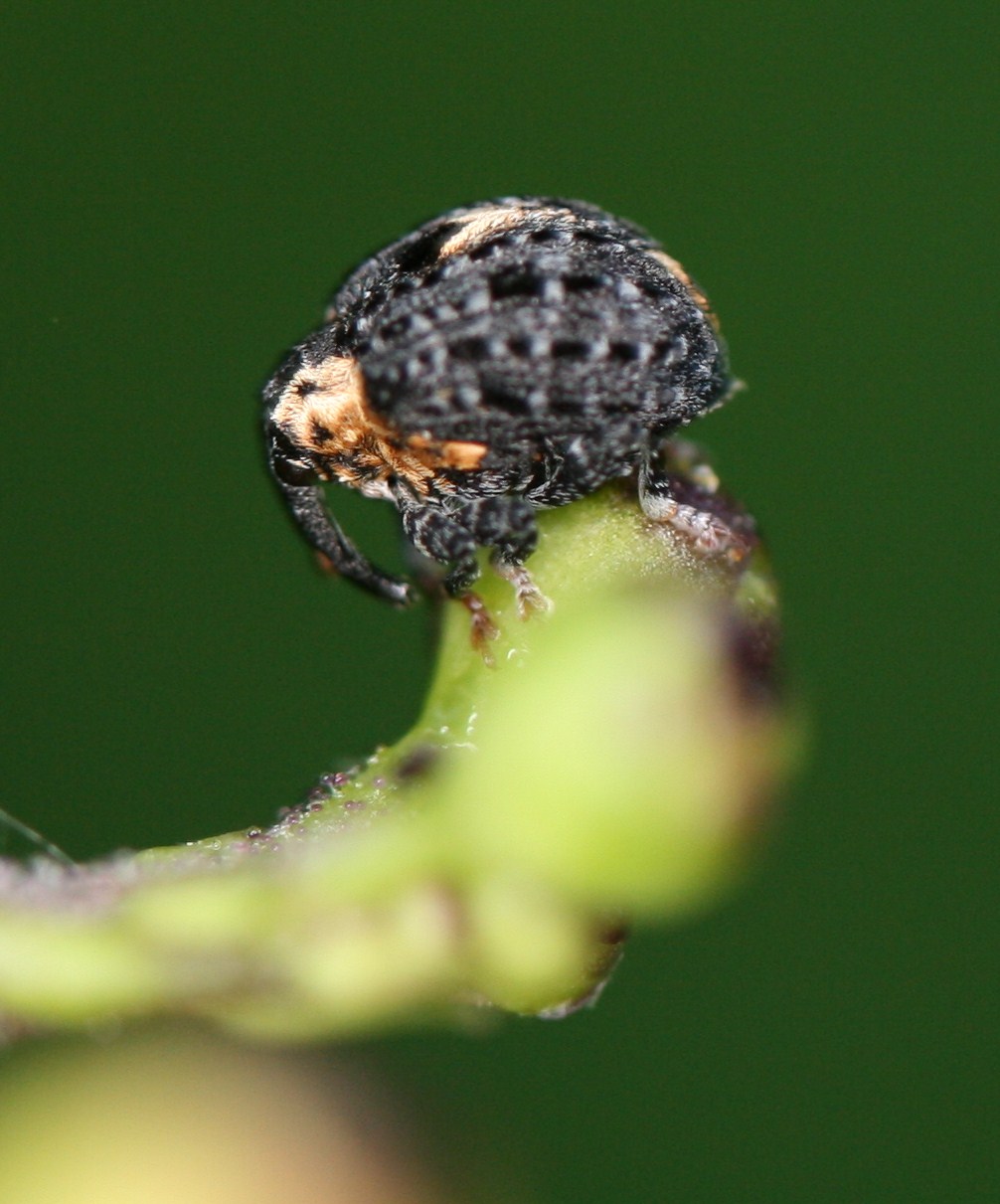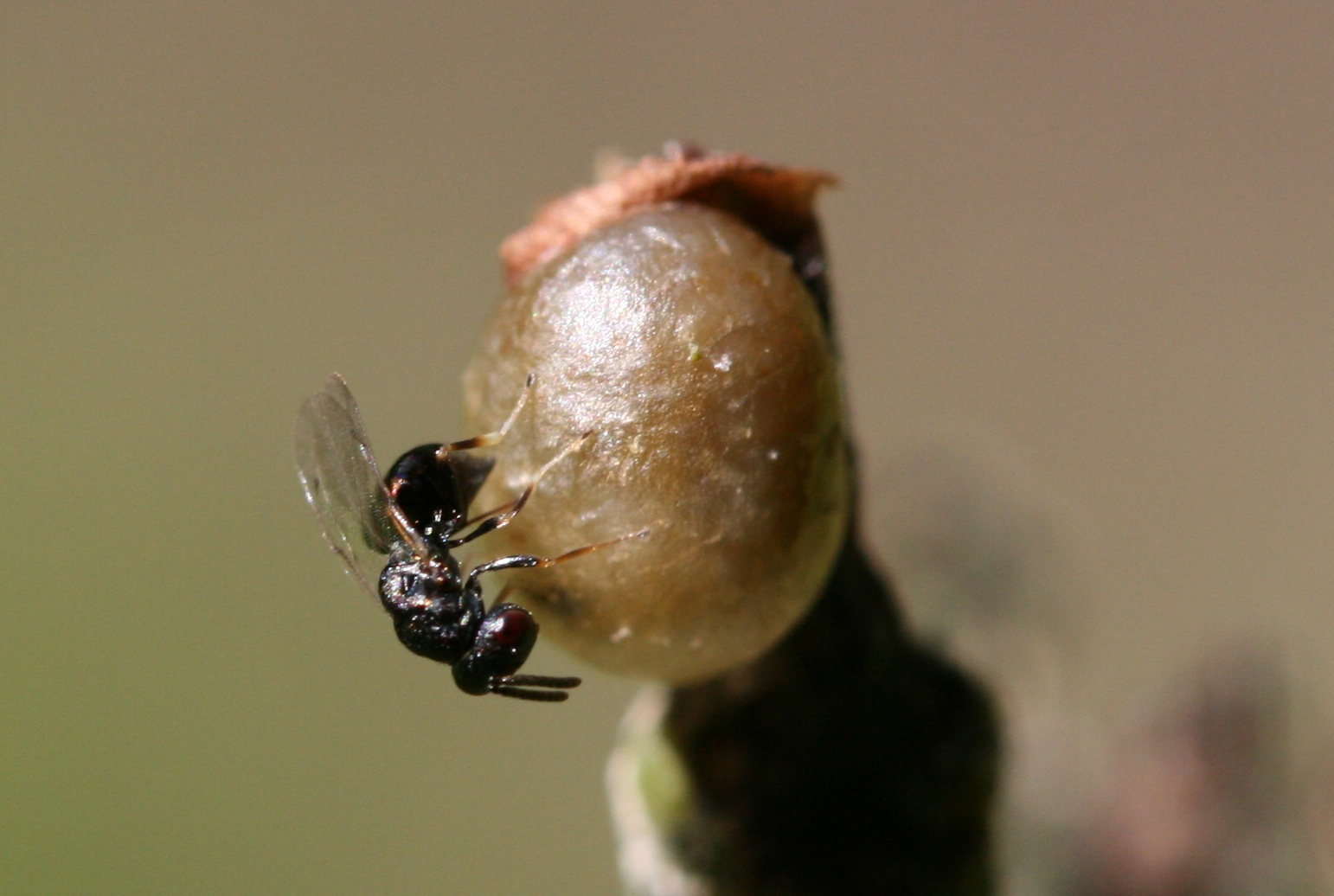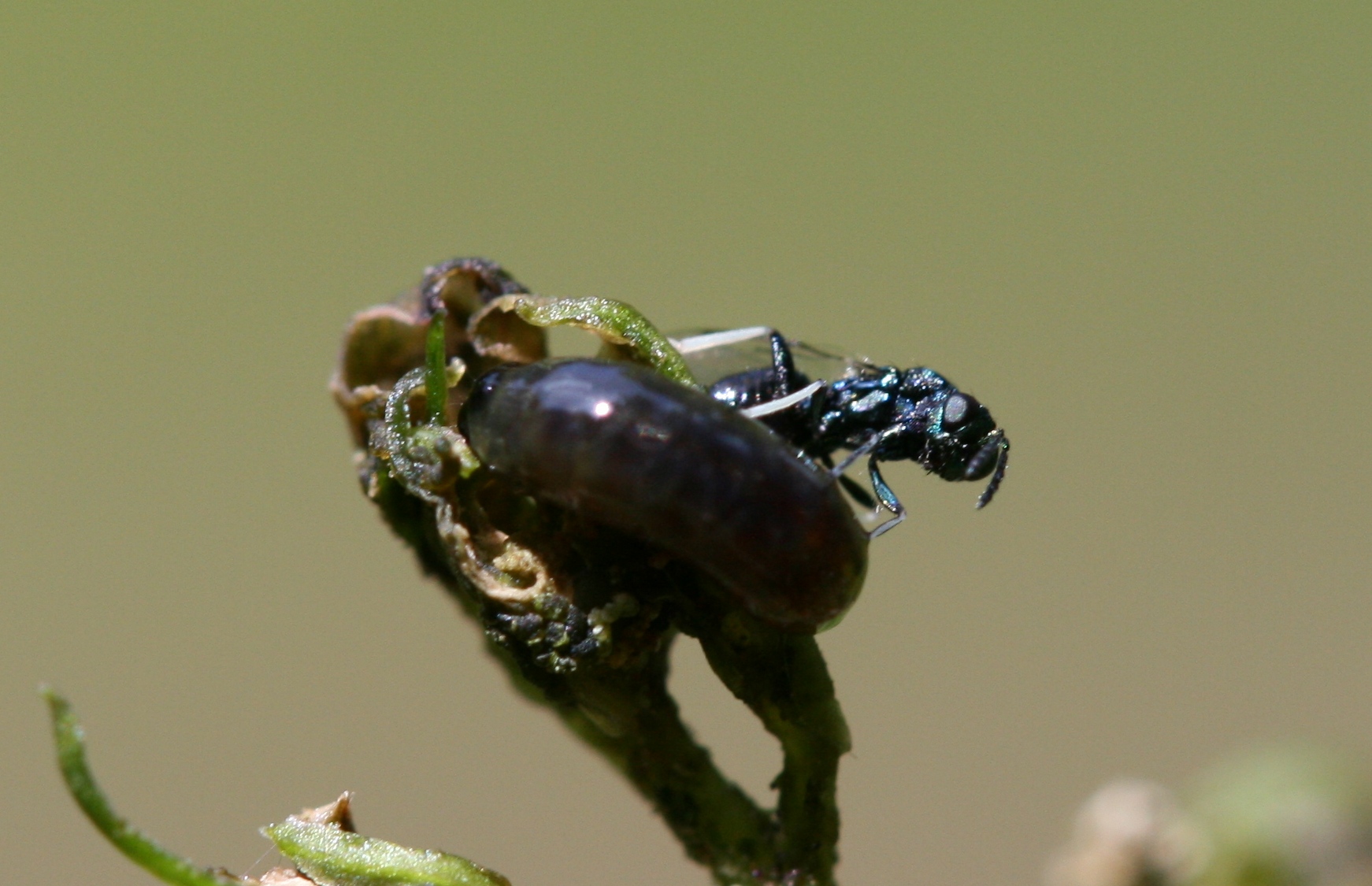Beastly goings on
This blog is devoted to animals. There’ll be tales from the undergrowth, photos and a little bit about the books I’ve written.
So, let’s begin. I’d like to show you some of things that have been spotted out and about in the last few months.
The first one I want to present is an intriguing wasp, a number of which were purposefully flying around the figwort (Scrophularia nodosa) plants in a small wood not too far from where I live in the UK. You can see the proud beast below in a photogenic pose. Its proper name is Symmorphus gracilis and as wasps go it is quite a big thing, about 1cm long.

Apart from stopping now again to bury its head in a figwort flower, the wasp behaved like it had ADHD – spending no longer than a couple of seconds hovering above a figwort leaf before buzzing off to examine another. After a while it became clear this wasp was interested in more than just the figwort’s nectar. Many of the figwort leaves were shot through with holes, the makers of which were not very far away. The very unsightly larvae of figwort weevils (Cionus sp.) love nothing more than the succulent leaves of figwort. The adult weevils are quite handsome, velvety insects, but as larvae they look like something that has been coughed up and it would take a very forgiving eye indeed to see any beauty in these poor wretches. Take a look for yourself:


To round off their unfortunate appearance the larvae also secrete a nasty brown liquid, probably to keep their enemies at bay, which is all well and good, but some predators just aren’t that fussy. The Symmorphus wasps actively hunt these weevil larvae. They fly around the figwort leaves and when they find a juicy grub of a suitable size they zero in. They bite the larva and use the paralysing venom in their sting in a brutal and sustained assault. The weevil larva, fat and legless, is powerless to resist.

When the paralysing venom has kicked in the wasp clamps the grub between its legs and takes off for its nest sluggishly and with some effort, which is no surprise really considering the weight slung beneath her. The wasp’s nest is a simple affair; normally the exit hole of an adult wood-munching beetle made as it leaves its larval habitat behind and it is this the female wasp stocks with lots of weevil larva in neat little chambers. The unlucky weevil larvae, alive but paralysed, are destined to be the food for the wasp’s own larvae and in the dark confines of the nest all they can do is wait for the wasp’s egg to hatch and then slowly to be eaten alive. Tough tittie for the weevil larvae, but that’s the sharp end of nature for you.
[A quick but interesting aside – Some researchers in Estonia have been studying these wasps for some time and they found that each female S. gracilis builds a nest with an average of 3-4 cells. Each of these cells is stocked with an average of 13 Cionus spp. larvae. Therefore, on average, each S. gracilis female must catch, subdue and transport to the nest about 40 Cionus spp. larvae. Is that incredible or what?]If being paralysed and getting locked in the dark with a ravenous wasp maggot weren’t enough, the figwort weevil larvae have more enemies to contend with. These are wasps as well, but they’re small. One species (Pteromalus sp.) is about 3-4mm long, while the other species (Baryscapus endemus and Entedon cionobius) are 1-2mm long. If the weevil larva could only know what these predators had in store they’d surely hide or assume another identity, alas they’re just weevil grubs so both of these things are out of the question.
The females of these wasps find a suitable weevil larva or pupal cocoon and using their tiny ovipositor to puncture the surface they lay their eggs inside. If a cocoon is the target the wasp larvae hatch and go to work quickly, scoffing all the edible bits until there’s precious little left of the original occupant. Eventually five or more wasps (Baryscapus endemus and Entedon cionobius) emerge from the cocoon to begin the cycle all over again, season permitting.

If the weevil larva is the target the wasp grubs hatch, but hold back from tucking into their host until it makes a cocoon and pupates. The adult wasps (Pteromalus sp.) that emerge are a fair bit bigger than the other species, so each weevil larva can only support the complete development of one or two of them.

Who’d be a figwort weevil, eh?
Leave a Reply